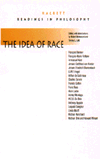Race, Hybridity, and MiscegenationPosted in Anthologies, Books, Media Archive, Philosophy, Social Science on 2009-12-04 06:20Z by Steven |
Race, Hybridity, and Miscegenation
Thoemme Continuum
2005-06-30
657 pages
ISBN: 1843711044
EAN/ISBN13: 9781843711049
Edited by:
Robert Bernasconi, Edwin Erle Sparks Professor of Philosophy
Pennsylvania State University
Kristie Dotson, Assistant Professor of Philosophy
Michigan State University
Volumes 1 and 2 of this 3 volume set collect the major contributions to the scientific debate on the unity of the human race in the 1850s, focusing particularly on the idea of hybridity. Volume 3 republishes the major contributions to the political debate on miscegenation.
This set brings together very rare primary sources of two central debates in the USA from the second half of the 19th century and early 20th century. Many of the essays in all three volumes have not been republished since their original publication and are extraordinarily hard to find. Volumes 1 and 2 collect the major contributions to the scientific debate on the unity of the human race in the 1850s focusing particularly on the idea of hybridity, which since Ray and Buffon had been central to species definition. The main book-length contributions to the debate were recently republished in “American Theories of Polygenesis” (Thoemmes Press, 2002). However, alongside these books and feeding off them are passionate debates which helped to define scientific racism for that time, not only in the US, but also Europe, because to a certain extent Europeans were willing to defer to American observers for their knowledge of Africans and particularly the effects of racism. Volume 3 republishes the major contributions to the political debate on miscegenation.The term “miscegenation” was coined in the anonymous text “Miscegenation: The Theory of the Blending of the Races, Applied to the American White Man and Negro”, now attributed to David Croly. Some of the works included are overtly racist in highly objectionable ways and serve to document a context that is too often ignored. A particular feature of this volume is the inclusion of works by African-American authors. Some of the authors and texts included have been forgotten, but even the better-known texts can be properly understood now they are restored to their context. The debates about hybridity and miscegenation are not only of deep historical significance, they are also of interest in the light of the contemporary rehabilitation of the idea of hybridity in the work of Homi Bhabha, as well as the current interest in the idea of “mixed race”. The set comes with two separate introductions by editor Robert Bernasconi. These substantial essays (5,000-10,000 words each) record the history of the debates including reference to works not here republished, brief biographical information on the authors included, and insights into the larger intellectual and political context.





